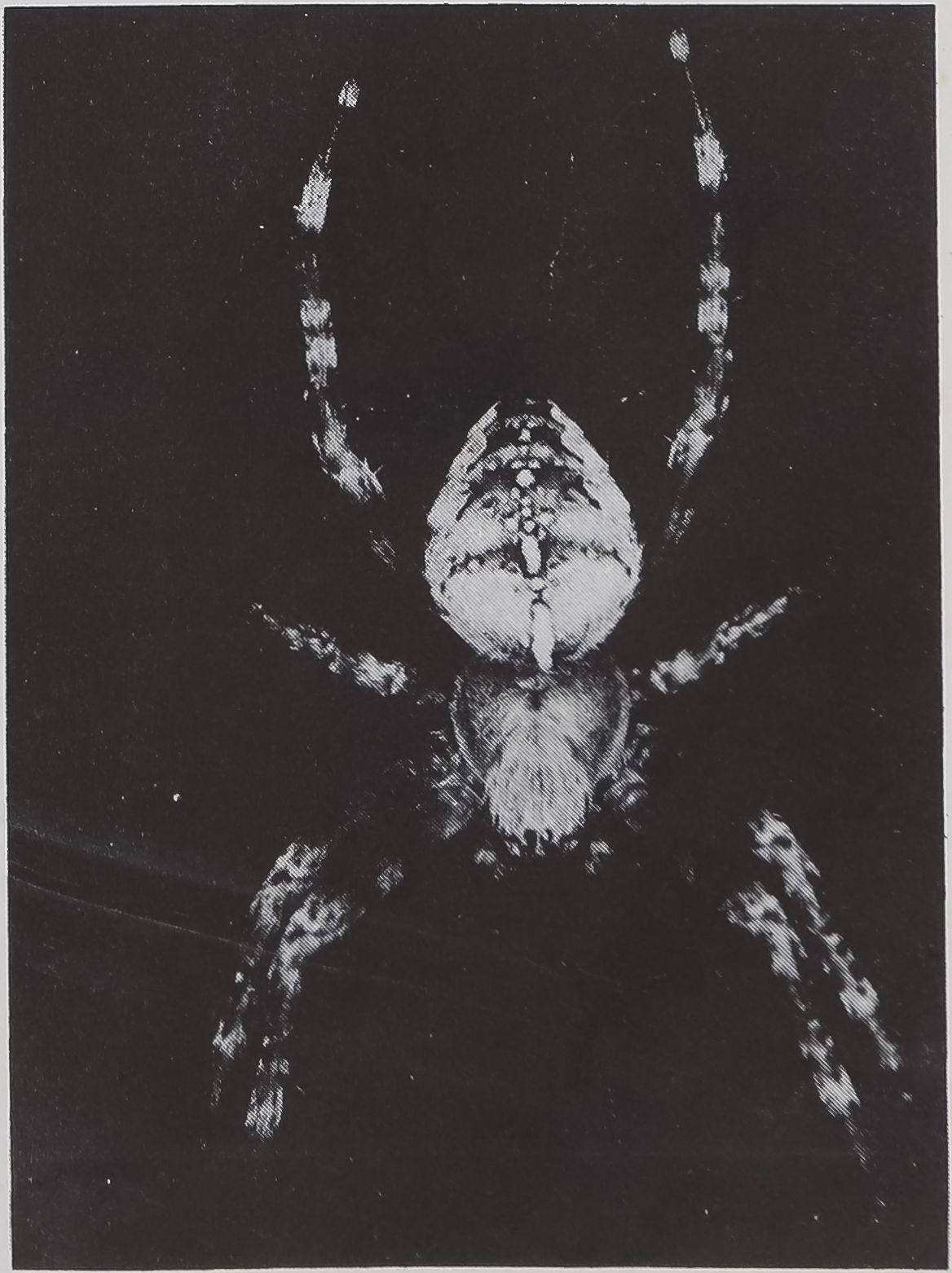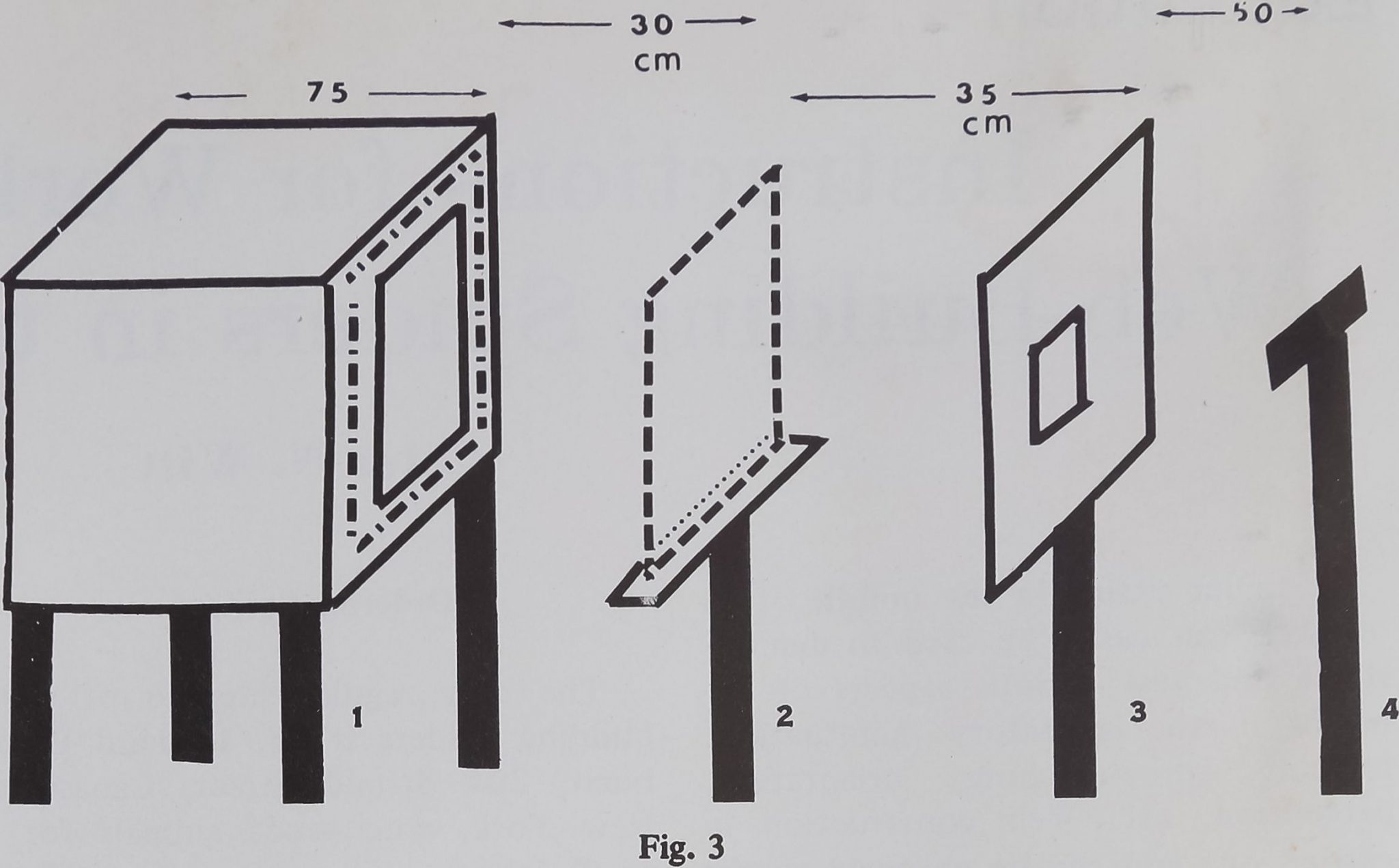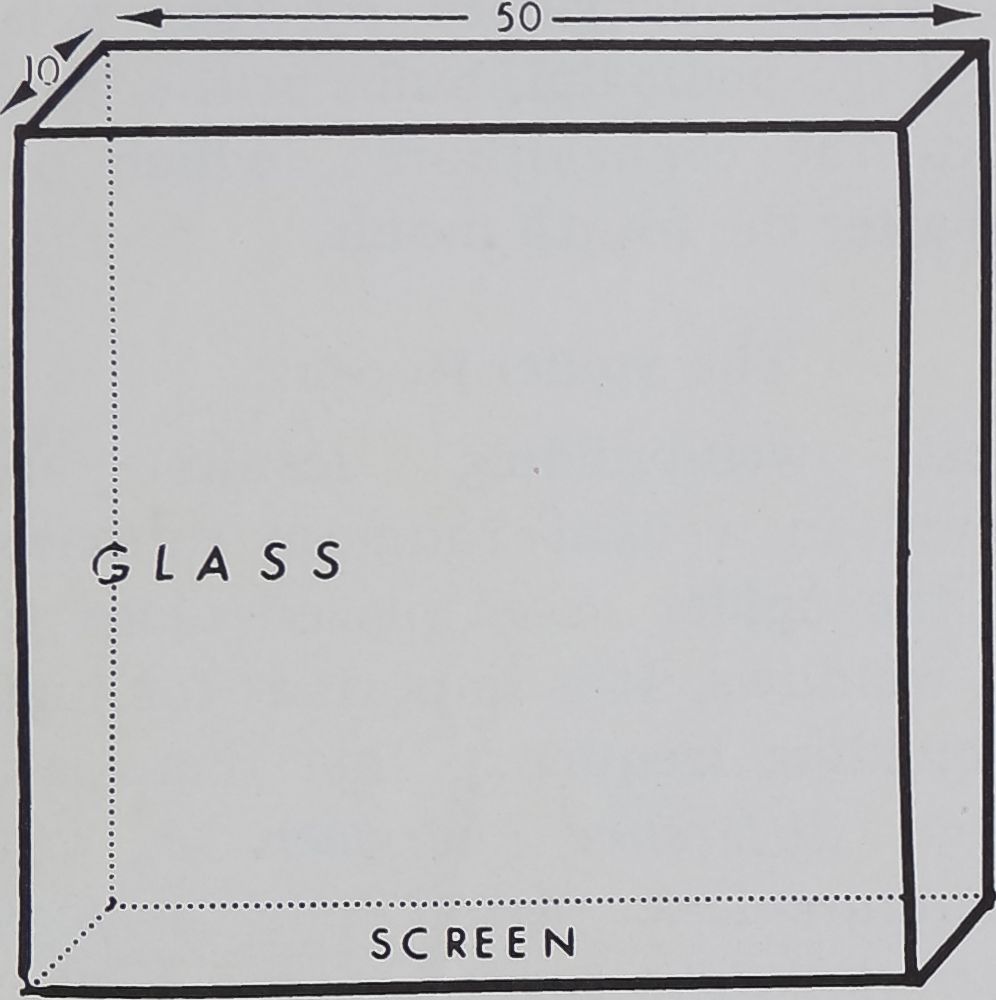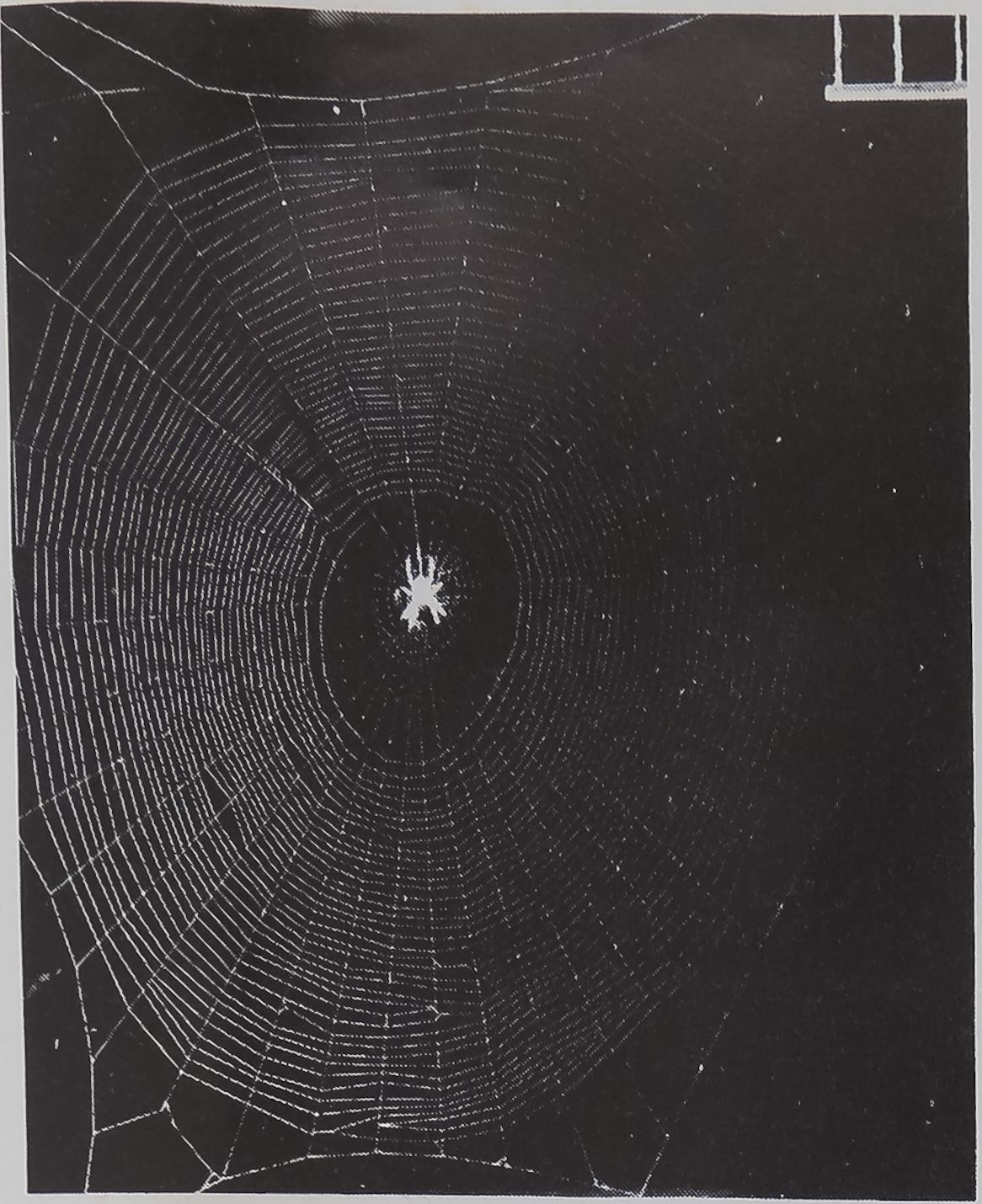Images Collection
View this article in Search Friendly Plain Text
NOTE: This plain text article interpretation has been digitally created by OCR software to estimate the article text, to help both users and search engines find relevant article content. To read the actual article text, view or download the PDF above.
Education
Reprinted from BioScience
Instructions for Working with Web-Building Spiders in the Laboratory
A spider sitting in the middle of its orb-web can easily be used to demonstrate and test various aspects of behavior in the laboratory: habituation, learning, prey-catching, orientation, perception, etc. Web construction is carried out and can be observed nearly every day in a laboratory frame. The observer can see results of interference with construction on plasticity or adaptability of invertebrate behavior.
The following instructions do not replace or duplicate details given in A Spider’s Web, Problems in Regulatory Biology, by Witt, Reed, and Peakall, which was published by Springer-Verlag, New York, Inc., in 1968. More practical details are included than in the book for optimally setting up web experimentation in the laboratory while discussion of problems of biology, web evaluation, and background information are avoided.
Catching Spiders
The time it takes to catch spiders depends on the part of the country; spider webs appear outdoors in summer and autumn. If a spider is caught in the center of its web, one can assume that this is most likely an orb-web builder. As webs are usually built at sunrise, the early morning on a sunny day is a good time for finding spiders. Many spiders leave the web during the day and hide under a leaf, but can be found by following the “signal thread” from the web center to the hiding place or “retreat.” They also become more visible in the evening when they return to the center of the web at sunset. A small container is held below the animal, and when the spider is touched with a stick, it usually drops straight down into the container.
The author is in the Division of Research, North Carolina Dept, of Mental Health, Raleigh, N.C. 27611.
Peter N. Witt
Ordering Spiders
The only regular supplier of webbuilding spiders is Mr. Leonard Pank-hürst, 204 Stroud Street, Canastota, New York, who sends animals for a small fee plus air postage, prepaid, to any part of the country. It linearly impossible to get spiders from January to April, but Mr. Pankhurst may have cocoons with eggs during that time. If a cocoon is placed in a warm room and opened with scissors, little spiderlings will emerge in a few days and start to build webs in 2-3 weeks.
Species
There are some web-builders that construct large orbs outdoors, but build rarely in the laboratory. Others build well in the lab, but do not keep to a strict 24-hour rhythm, which makes their use for drug experiments difficult. The female of Araneus diadematus Clerck, the cross spider (Fig. 1), is the only one which builds a new web nearly every day, except during its moulting periods of 2-7 days’ length. The animal can be used for experimentation from early youth, about 2 weeks after hatching, to old age, which for laboratory-raised females is about 8 months. Young, small animals build small, delicate webs, but they react to experimental interference (i.e., drug applied on a body weight basis) in the same way as adults.
Sex
At an early age, male and female spiders look alike, feed alike, and build alike. At 3-4 months of age, around the fourth moult, the male Araneus diadematus spider stops building webs and grows very little more, while the female goes into a particularly productive web-building phase. For any experiments which use web construction, males should be eliminated. Males
can also be recognized by their relatively large pedipalpi, bulbs at the front end of the céphalothorax, which develop after the fourth moult.
The Spider Room Best web-building results are achieved in a light room in summer, with the spider cages placed close to open windows. It is important for high web-building frequency that there is a distinct difference between a low temperature-dark period and a high temperature-light period. Only few of the stimuli for web building have been identified, but good webs are built daily in the early morning hours, if an 8-hr 50-60 F unight” is followed by a 16-hr 70-80 F “day.” Medium to high humidity is good for animal survivaL If experiments are performed during the winter, the day should be extended by artificial light. The thermostat in the room should be moved up or down and the window opened or closed as needed. Many spider cages can be kept on racks close together, so that as many as 100

Fig. 1
January 1,1971
23

web-building spiders can be accommodated in a small room.
While building time and frequency under optimal conditions are constant and well known, few experiments studying the results of changes in length and detail of the 24-hr web-building cycle have been reported; temperature, light, humidity, and other environmental factors can be varied singly or in combination, and related to changes in web-building behavior.

Fig. 2
The Spider Cage
Although one can think of many enclosures in which spiders will readily build webs, there are a number of advantages to an aluminum cage for each animal as described below: low weight for handling, sturdiness, easy identification of individual animals, nearly 2-dimensionality of webs, and access to webs. Two aluminum frames of about 50 x 50 cm are held about 10 cm apart by connecting mouldings at the four comers, and wire screen is stretched around the four sides. The front and back are covered with 50 x 50 cm window glass, which can be removed for photography or held in place with screws or clamps the rest of the day. Such cages can also be ordered from State Metal Awning Company, 131 Shonard Street, Syracuse, New York, and from many other companies which make screen and storm windows. It is important to maintain clean cages to avoid fastening of threads to glass. Figure 2 shows a cage in perspective.
Web Photography
Every morning a new web will be found in most cages, with the spider sitting in the hub. For photography, the glass doors have to be removed without
affecting the web. If silk strands are anchored to the glass, the door can be partially opened (with great caution) and a strand removed from the glass and fastened to the aluminum frame with Scotch Tape. Care has to be taken that the web stays undistorted during such maneuvering. Figure 3 shows the frame, with the web and possibly a spider in the middle, being placed on a stand (2) in front of a black box (1); the opening of the box, which provides a dark background for the web, is surrounded by a square of fluorescent light tubes. A movable screen (3) is placed between the camera (4) (or the observer) and the web; it should be positioned so that Only light reflected by the web hits the camera. This makes every single strand visible, and good photographic pictures can be obtained without spraying (Fig. 4). Originally, the use of spray paint as well as smoke has been recommended to make webs better visible for photography; the quality of modem photographic film makes this unnecessary. The distance measurements in Figure 3 are only a guideline and vary from web to web.
The unsprayed web is best photographed with panatomic X, 35 mm film, 0.5 1 sec exposure time (depending on distance: web to camera), and a diaphragm opening of 3.5 Exposure time and opening varies for different cameras. It has been found useful for measurement of the web on the photograph to place a scale of known size into the frame so that it appears on the photograph. A sample photograph of an unsprayed web built by an adult female Araneus diadematus is shown in Figure 4.
Feeding Spiders
It is most important to give spiders water to drink, if possible, every day. Ordinary water from the faucet can be sprayed onto the cage or onto the web, or a drop can be offered to the animal from the needle of a syringe filled with water. The latter procedure is a good preparation for drug experiments, because spiders which have been offered drops several times will be less difficult if a drug solution is offered in the same manner. Most spiders which have just arrived in a laboratory will run away or drop from the web when a drop is offered for the first time; this always changes after a few days.
For an observation period of a few days, feeding some sugar water (enough ordinary cane sugar dissolved in water until it tastes sweet, but does not appear sticky) proves sufficient to support regular web building. It helps if the animal is permitted to redigest its old web through taking it down overnight piece by piece, or through liquefying and sucking up the ball of silk which is left after the web has been cut off from its supports. For longer periods of time, nothing superior to flies has been found for feeding spiders. Young spiderlings should be fed Drosophila-sized prey, adult spiders, houseflies (one or two twice a week). Neither over- nor underfeeding improves regular web construction. If leftover flies cannot be obtained from the entomology or genetics department of a university,- some old cheese and coffee grounds can be placed on the window sill, with a light at night serving as a lure, and flies can be trapped.
24
BioSdence VoL 21 No. 1

Fig. 4
Drug Application
A certain drug effect depends on the amount of drug in relation to the body weight of a spider and time of application. As an example, an empty container is weighed within 1 mg, and reweighed with the spider inside—a female at the beginning of the adult stage weighs between 100 and 250 mg. A drug solution of 1.0-mg d-am-phetamine in 1.0 ml of sugar water is prepared, and a drop of 0.1-ml solution attached to the mouth parts of a 100-mg animal. One has to make certain that all solution is ingested. This 100-mg animal will now have received 0.1 mg of drug, or 1 g drug/kg body weigh®! the drug solution was ingested at 5:00 p.m. and web-building time of the spiders at that time of year was 5:00 a.m., the 12-hr drug effect will be seen in the next web.
The preceding figures were selected as a good example for the demonstration of a drug effect in the web pattern: webs will be quite irregular in radius and spiral spacing 12 hr after 1 g/kg dextroamphetamine. If another drug is used, effective dose and optimal time may vary considerably and have to be adjusted. It is important to make certain that pure substances are specially obtained, because commercial tablets and solutions contain many other chemical additives which change the effect. Photographs taken of webs built 1, 2, and 3 days after the first drug web will demonstrate subsequent recovery of web building. Only a limited number of drugs have been tested so far, and dose-effect relationships as well as consequences of repeated drug administration should be investigated.
Web Measurement
Many web changes which the eye does not notice can be objectively demonstrated through comparison of web measurements. Exact measurements are obtained from projected negatives of web photographs, and the procedure is described in detail in A Spider’s Web. However, some approximate measurements with a ruler can be made from the web, which is placed against a dark background. The vertical and horizontal diameter of the web should be measured between each of two outermost spiral turns. The position of the hub in the catching area should be measured by comparing’ distances from outer spiral to hub in four directions. Number of radii and spiral turns in four cardinal directions should be
counted. If diameters of the inner or free zone are measured separately from the catching ring’s diameter, an approximation of thread length in the web can be obtained by use of the formula:
L = n xR + kn (a + R)
in which L equals thread length, n equals number of radii, R equals radius of circular catching area (North + South + East + West)/4, k equals number of spiral turns counted along South radius, and a equals radius of inner circular area (free zone plus hub). It is informative and relatively simple to compare thread lengths, thread weights, and thread thicknesses (weight/length) for webs built by different spiders under varying conditions.
Using web measures, many interesting questions can be investigated: how does a web change throughout the life-time of a spider; how, in various species and families; how much can experience affect the web-pattem; and how much do environmental conditions change? For information on experimental work already performed with spiders, consult, in addition to the book mentioned in the first paragraph: T. H. Savory. 1952. The Spider’s Web, Fred Wame & Co., London
W. J. Gertsch. 1949. American Spiders, D. Van Nostrand Co., New York and articles quoted in these books.
Acknowledgment
The author gratefully acknowledges support from the National Science Foundation for his laboratory studies with web-building spiders.



